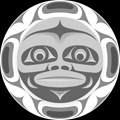Website of Dr. Brian Dippie – UVIC
This is the home page of Dr. Dippie, faculty in the Department of History at the University of Victoria. Areas of research interest, related to technology and aboriginal self-representation, include:
- The Mythic West
- History and Art
- Racial Stereotyping in the American West
Listed on this homepage are citations for a number of publications that might be of interest for someone who would like to explore further image and identity in of aboriginal people in American art:
“‘Now or Never Is the Time’: Anthropology, Government Policy and the Concept of the Vanishing Indian,” Hemispheric Perspectives on the United States: Papers from the New World Conference (Greenwood Press, 1978) .
The Vanishing American: White Attitudes and U.S. Indian Policy (Wesleyan University Press, 1982; reprinted, University Press of Kansas, 1991) .
“Representing the Other: The North American Indian,” Anthropology and Photography, 1860-1920, ed. Elizabeth Edwards (Yale University Press/Royal Anthropological Institute, 1992)
“Photographic Allegories and Indian Destiny,” Readings in Aboriginal Studies, vol. 4: Images of the Indian, ed. Joe Sawchuck (Bearpaw Publishing, Brandon University, 1995)
“What Valor Is”: Artists and the Mythic Moment,” Legacy: New Perspectives on the Battle of the Little Bighorn, ed. Charles Rankin (Montan Historical Society Press, 1996)

